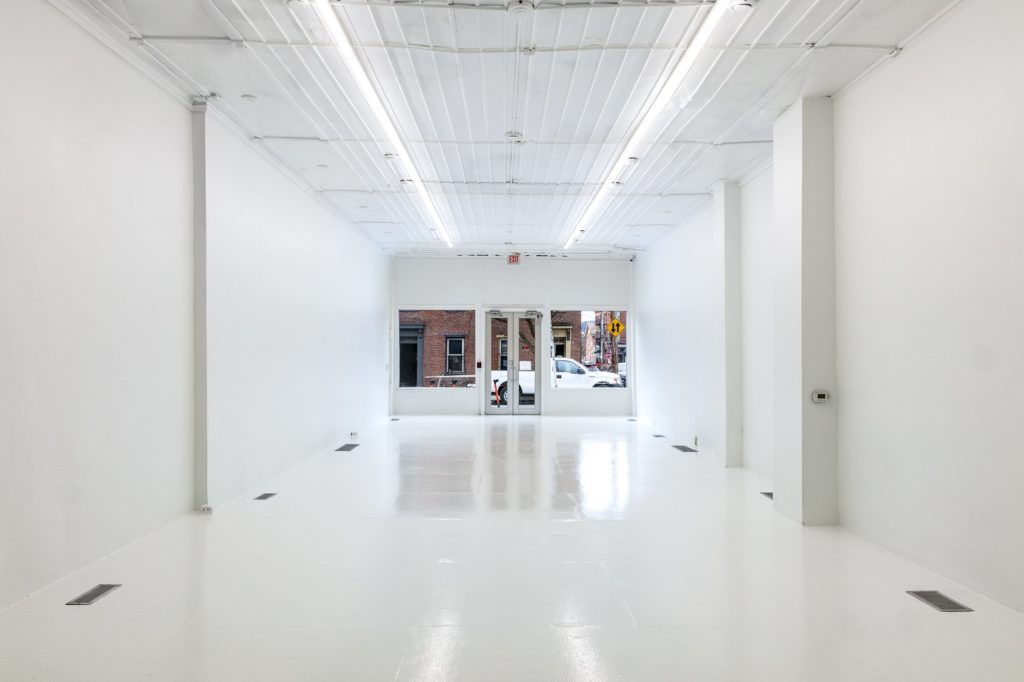The Museum Collects Itself

3rd March – 30th December, 2023 / Mattress Factory Museum / Collaboration with Lenka Clayton / Curated by Denise Markonish
For the duration of the exhibition, the trash generated by the normal operations of the Mattress Factory Museum will be redirected – stored, catalogued and displayed within the Monterey Annex Gallery – instead of being thrown away. The gallery will begin as an empty white space and will slowly fill up with the discarded materials of all aspects of institutional activities, including production waste from other artists installations, administrative office debris, deinstalled artworks, Kusama booty-covers, Turrell light bulbs, kids workshop debris (glitter), museum visitor detritus, obsolete office technology, staff memos, and other things.
This page will be updated with images as the work progresses.
Exhibition text, Denise Markonish, Curator
“It’s my dream. A world where all would be silent and still and each thing in its last place, under the last dust.”
– Samuel Beckett, Endgame, 1957
Some artists create good problems, they pause and/or break a system in order to interrogate it. Lenka Clayton and Phillip Andrew Lewis are such artists. For example, in 2021, they re-envisioned how cities commemorate their past by creating Historic Site, an 8-foot tall cast bronze plaque installed on the façade of a 120-year old former incline station in Pittsburgh (one already sporting a small plaque). However, rather than highlight one moment or building, Clayton and Lewis go back 600 million years and extend into the deep future, creating a schism in how we understand human and planetary time.
Clayton and Lewis continue this archaeology in, The Museum Collects Itself, which focuses on the perceived antiseptic space of the museum, one seemingly free of dust or garbage. For the 10-months of their exhibition, Clayton and Lewis reveal the white cube’s lack of pristine, by diverting the museum’s waste stream to the Monterey Annex first floor. The gallery begins empty, and as trash is accumulated, it is brought into the space. 91 trash and recycling bins are collected daily from the administrative and museum spaces of the Mattress Factory. All but biohazard and food waste will accrete in Clayton and Lewis’s exhibition to be sorted by the entire staff of the museum from the director to the docents, creating what the artists refer to as “an ever-evolving accumulation, forming piles into dunes, dunes into hills, slowly filling the space.”
Investigations into waste have historic precedent in artists such as Mierle Laderman Ukeles and Michael Landy, who like Clayton and Lewis, disrupt systems. Ukeles Manifesto for Maintenance Art, 1969! emphasized the blurred boundaries between art and life, in favor of a public space of care. Ukeles cleaned museum vitrines and scrubbed the floors, making work visible that in both domestic and institutional realms typically remain private. Then, in 1979, Touch Sanitation, documented her time with the New York Department of Sanitation, where she met over 8,500 employees, shook their hands and thanked them for their work. Landy, on the other hand, turned his lens to his own material accumulation. For Break Down, 2001, he compiled an inventory of his belongings – 7,227 items – which he and a team sorted, disassembled, and prepared for the landfill. A self-portrait through possessions.
Clayton and Lewis contemporize this history, especially as concerns about carbon footprints are urgent. By collecting 10-months of trash they make cultural waste evident, while aestheticizing the discarded in an installation – sorting, baling, and piling into the gallery, as visitors traverse the material via diminishing pathways. This conjures Man Ray and Marcel Duchamp, Dust Breeding (1920), in which the dust gathered on Duchamp’s “Large Glass” was photographed by Man Ray in a bird’s eye view. It is accumulation made visible, a nod to the Readymade, and an imaginary map of a forgotten city. After dust breeds and garbage piles up, Clayton and Lewis’s gallery ends as it started: empty. Perhaps we will be left with a deeper understanding of what happens behind the scenes or will imagine hovering above the installation to see the topography of the Mattress Factory’s waste, a place “under the last dust.”
